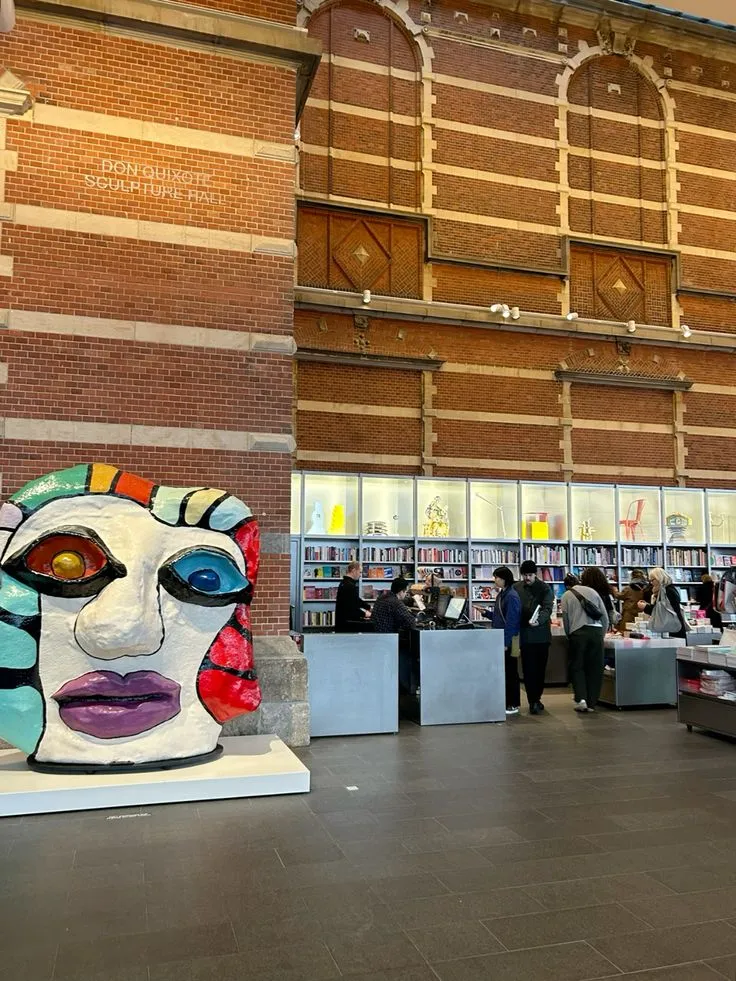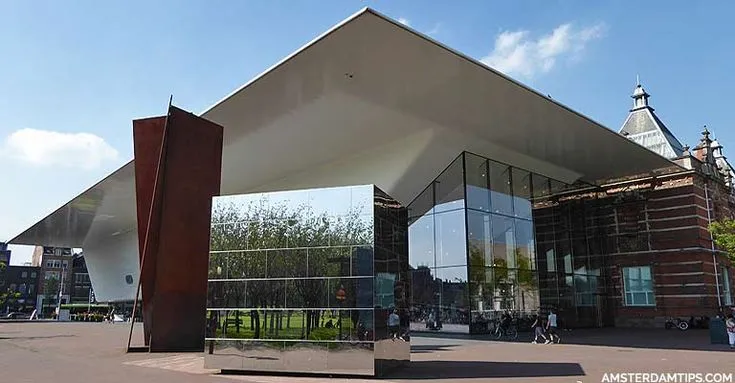Nestled in the heart of Amsterdam’s Museumplein, the Stedelijk Museum stands as a beacon of innovation, creativity, and cultural dialogue. Since its inception in 1874, this institution has been at the forefront of showcasing modern and contemporary art and design. Its rich history, diverse collections, and commitment to pushing artistic boundaries make it a must-visit destination for art enthusiasts and casual visitors alike.
A Storied Beginning
The Stedelijk Museum was founded in 1874 as the city’s municipal museum, with the aim of providing the public access to modern art. Designed by architect Adriaan Willem Weissman, the original building, completed in 1895, features a distinctive red-brick façade and a grand staircase, embodying the Neo-Renaissance style popular at the time. Over the years, the museum has undergone several expansions and renovations to accommodate its growing collection and to meet modern standards of exhibition design.

Architectural Evolution
In 2012, the Stedelijk Museum unveiled a significant architectural addition designed by Benthem Crouwel Architects. This new wing, often referred to as the “bathtub” due to its distinctive shape, features a sleek white exterior and expansive glass walls, creating a striking contrast with the original building. The design enhances the museum’s visibility and accessibility, while providing flexible spaces for contemporary exhibitions. The integration of the old and new structures symbolizes the museum’s commitment to honoring its heritage while embracing the future of art and design.
A World-Class Collection
The Stedelijk Museum boasts an impressive collection of over 90,000 works, spanning from the late 19th century to the present day. Its holdings include masterpieces by renowned artists such as Vincent van Gogh, Kazimir Malevich, Piet Mondrian, Henri Matisse, Jackson Pollock, Andy Warhol, and Roy Lichtenstein. The museum is particularly noted for its extensive collection of De Stijl works, a Dutch artistic movement that emphasized abstraction and geometric forms. Additionally, the Stedelijk houses significant pieces from movements like Bauhaus, CoBrA, Pop Art, Minimalism, and Conceptual Art, reflecting the dynamic evolution of modern artistic expression.
Curatorial Innovation

The Stedelijk Museum is renowned for its innovative curatorial approach, often challenging traditional exhibition formats to engage visitors in new ways. A notable example is the Stedelijk BASE, a permanent exhibition that reimagines the museum’s collection as a dynamic, city-like environment. Designed by architect Rem Koolhaas, Stedelijk BASE utilizes ultrathin steel walls and a flexible layout to present artworks in a manner that encourages exploration and interaction. This approach reflects the museum’s commitment to creating immersive experiences that resonate with contemporary audiences.
Temporary Exhibitions and Collaborations
In addition to its permanent collection, the Stedelijk Museum hosts a diverse array of temporary exhibitions that explore various facets of modern and contemporary art. These exhibitions often feature works by emerging artists, thematic explorations, and collaborations with other cultural institutions. For instance, the museum has recently showcased exhibitions by artists like Anselm Kiefer, whose works delve into themes of history, memory, and identity. Such exhibitions not only enrich the museum’s offerings but also foster a dialogue between the past and present, encouraging visitors to reflect on the evolving nature of art and its societal impact.
Educational Outreach and Public Programs
The Stedelijk Museum is deeply committed to education and public engagement, offering a wide range of programs designed to make art accessible to diverse audiences. These include guided tours, workshops, lectures, and interactive activities that cater to various age groups and interests. The museum’s educational initiatives aim to foster a deeper understanding of art and design, encouraging critical thinking and creative expression among participants.
A Cultural Hub in Amsterdam
Situated amidst other cultural landmarks such as the Rijksmuseum and the Van Gogh Museum, the Stedelijk Museum contributes to Amsterdam’s reputation as a global center for art and culture. Its location in the vibrant Museumplein area makes it an integral part of the city’s cultural landscape, attracting visitors from around the world. The museum’s diverse programming and commitment to innovation ensure its continued relevance in the ever-evolving art world.
Conclusion
The Stedelijk Museum Amsterdam stands as a testament to the dynamic interplay between tradition and innovation in the realm of art and design. Through its rich history, world-class collection, and forward-thinking exhibitions, the museum continues to inspire and engage audiences, offering a glimpse into the ever-changing landscape of modern artistic expression. Whether you’re an art aficionado or a casual visitor, a trip to the Stedelijk Museum promises an enriching experience that celebrates the power of creativity and the enduring relevance of art in our lives.


Taşdelen su kaçak tespiti Fatih’teki işyerimizde su kaçağını kolayca buldular. Hem ekonomik hem hızlılar. https://onsetinfotech.com/author/kacak/